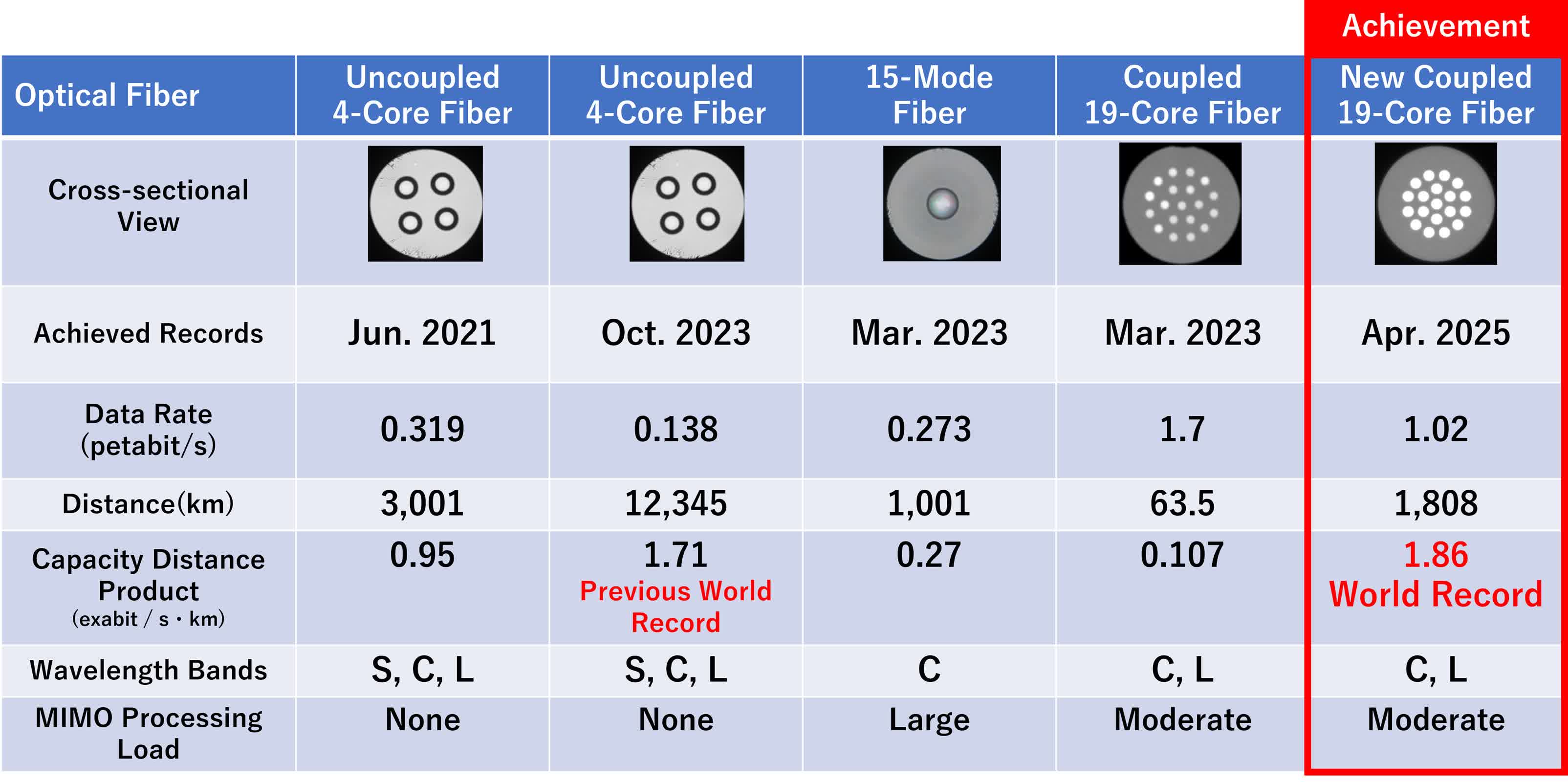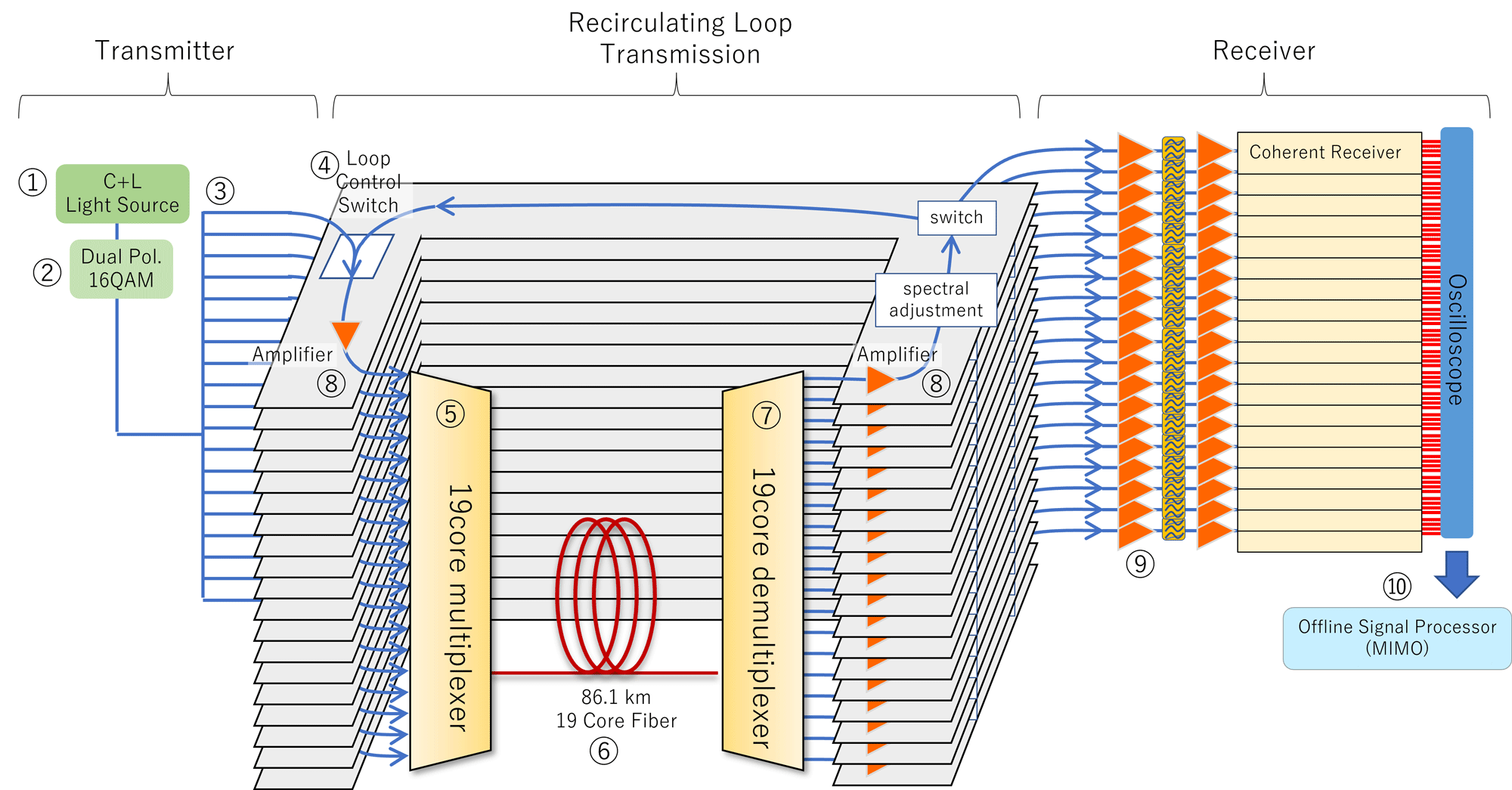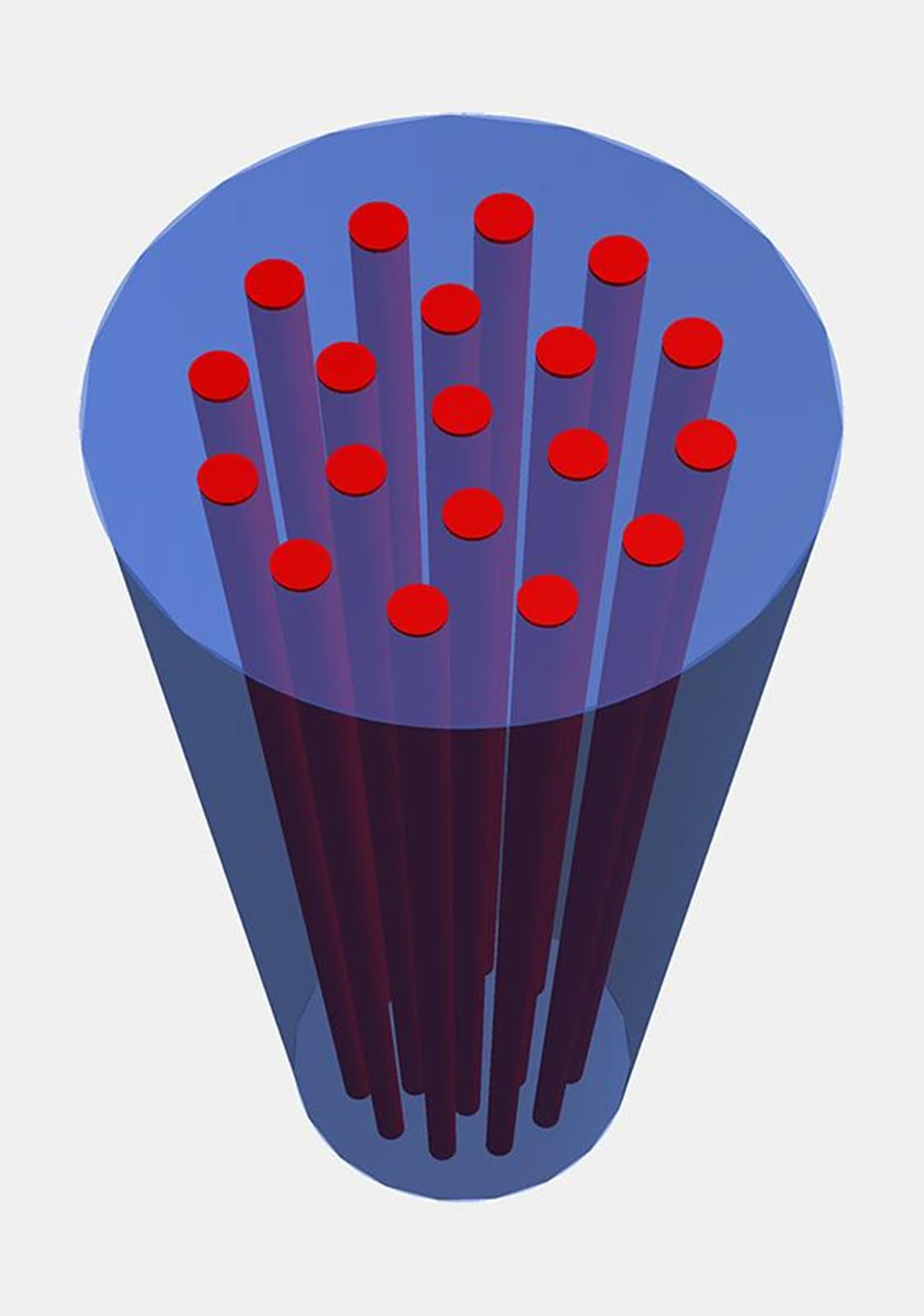Serving tech enthusiasts for over 25 years.
TechSpot means tech analysis and advice you can trust.
Why it matters: A technological leap in fiber optics has shattered previous limitations, achieving what experts once considered impossible: transmitting data at 1.02 petabits per second – enough to download every movie on Netflix 30 times over – across 1,808 kilometers using a single fiber no thicker than a human hair.
At the heart of this breakthrough – driven by Japan's National Institute of Information and Communications Technology (NICT) and Sumitomo Electric Industries – is a 19-core optical fiber with a standard 0.125 mm cladding diameter, designed to fit seamlessly into existing infrastructure and eliminate the need for costly upgrades.
Each core acts as an independent data channel, collectively forming a "19-lane highway" within the same space as traditional single-core fibers.
Unlike earlier multi-core designs limited to short distances or specialized wavelength bands, this fiber operates efficiently across the C and L bands (commercial standards used globally) thanks to a refined core arrangement that slashes signal loss by 40% compared to prior models.
The experiment's success relied on a complex recirculating loop system. Signals traveled through an 86.1-kilometer fiber segment 21 times, simulating a cross-continental journey equivalent to linking Berlin to Naples or Sapporo to Fukuoka.
To maintain integrity over this distance, researchers deployed a dual-band optical amplification system, comprising separate devices that boosted signals in the C and L bands. This enabled 180 distinct wavelengths to carry data simultaneously using 16QAM modulation, a method that packs more information into each pulse.
At the receiving end, a 19-channel detector, paired with advanced MIMO (multiple-input multiple-output) processing, dissected interference between cores, much like untangling 19 overlapping conversations in a crowded room.
Schematic diagram of the transmission system
This digital signal processor, leveraging algorithms developed over a decade of multi-core research, extracted usable data at unprecedented rates while correcting for distortions accumulated over 1,808 km.
The achievement caps years of incremental progress. In 2023, the same team achieved 1.7 petabits per second, but only across 63.5 km. Earlier efforts using 4-core fibers reached 0.138 petabits over 12,345 km by tapping the less practical S-band, while 15-mode fibers struggled with signal distortion beyond 1,001 km due to mismatched propagation characteristics.
The new 19-core fiber's uniform core design sidesteps these issues, achieving a capacity-distance product of 1.86 exabits per second per kilometer – 14 times higher than previous records for standard fibers.
Image diagram of 19-core optical fiber.
Presented as the top-rated post-deadline paper at OFC 2025 in San Francisco, this work arrives as global data traffic is projected to triple by 2030.
While challenges remain, such as optimizing amplifier efficiency and scaling MIMO processing for real-world use, the technology offers a viable path to petabit-scale networks. Researchers aim to refine production techniques for mass deployment, potentially enabling transoceanic cables that move entire data centers' worth of information hourly.
Researchers aim to refine production techniques for mass deployment, potentially enabling transoceanic cables that move entire data centers' worth of information hourly.
Sumitomo Electric's engineers, who designed the fiber's coupled-core architecture, note that existing manufacturing lines can adapt to produce the 19-core design with minimal retooling.
Meanwhile, NICT's team is exploring AI-driven signal processing to further boost speeds. As 6G and quantum computing loom, this breakthrough positions fiber optics not just as a backbone for tomorrow's internet, but as the central nervous system of a hyperconnected planetary infrastructure.











 English (US) ·
English (US) ·